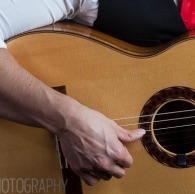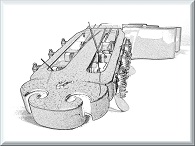Welcome to one of the most active flamenco sites on the Internet. Guests can read most posts but if you want to participate click here to register.
This site is dedicated to the memory of Paco de Lucía, Ron Mitchell, Guy Williams, Linda Elvira, Philip John Lee, Craig Eros, Ben Woods, David Serva and Tom Blackshear who went ahead of us.
We receive 12,200 visitors a month from 200 countries and 1.7 million page impressions a year. To advertise on this site please contact us.
|

|
|
[Deleted]
|
You are logged in as Guest
|
|
Users viewing this topic: none
|
|
Login  | |
|

   
Erik van Goch
Posts: 1787
Joined: Jul. 17 2012
From: Netherlands

|
 RE: tuning (in reply to andresito) RE: tuning (in reply to andresito)
|
|
|
quote:
ORIGINAL: andresito
How do most people tune new strings? Tune up to pitch every half hour for a couple of days? Or tune a step up and let it come back down to pitch a couple of times?
I can only tell you how i do it. When a new string reaches its intended tension for the first time it will be stretched out, which structurally alters it's shape and behavior. The pitch will keep dropping as long as the string is not yet fully stretched out. On top of this well known phenomenon there is another less obvious source of string dropping: the windings you created to tune the string. When you wind your strings the normal way only a limited amount of tension is stored into the windings at first. When string tension raises the already winded part of the string will tighten up correspondingly, but they don't fully stretch out/tighten up right away. As a result an osmotic kind of tug-of-war starts between the lower level energy stored in the windings and the higher level energy stored in the plugged part of the string. As long as the level of energy stored in the windings is not in balance yet with the level of energy stored in the freshly tuned string the windings will locally tighten up more and more, releasing a little bit of string in the process. This causes additional tune dropping and on top it is very well possible this freshly released part of string has still to undergo previously mentioned stretching transition on top of it, causing even more tune dropping on the long run. You will have far less problems if you put on an old string that you have used before since it already made the full transition previously.
To limit tune dropping to an absolute minimum you simply have to add more tension into the windings when winding the string. You can do that by pulling the string in the opposite direction with one hand wile the other hand winds the string (make sure not to damage the strings during the process). So you basically try to imitate the future string tension by applying local pulling tension on that part of the string that is being winded at that very moment. As a result more energy is stored into the windings right away, limiting the amount of tug-of-war time to an absolute minimum (apr. 1 or 2 hours).
For a life cd-recording of Flairck i once had to change over 60 strings only hours before the concert. So i added a lot of extra manual energy into the winding to make sure they would be trustable within hours. After 2 hours of restringing over 60 metal strings i hardly had power/feeling left in my fingers, but the reward was great. That night (for the first time ever) i hardly had to re-tune the battery of 12 string guitars during the break because all the strings were still in perfect pitch (normally even the guitars that were not played before the break would drop a halftone dude to the heat of the super troupers). Even better, i didn't have to retune them for 3 days. Bud i did spend over an hour on tuning the sitar (melody strings with a tuner, resonance strings by ear).
So, by pulling the strings in the opposite direction during winding (adding extra energy on the windings) tune dropping can be limited to 1 or 2 hours. . During winding i also pay special attention to how the windings end up. The first windings i drop side a side (they touch but they don't overleap/cross). The last windings are privilege a little more space in between each other and i make sure they line up perfectly with the open part of the string (no sharp angles). I also make sure the bridge knob is tightened up well enough. To speed up the tug-of-war process i also tune it a halftone above the normal tuning a couple of times. Before i up-tune the dropped strings again i frequently apply manual string pulling/massage again, concentrating on stretching the string and feeding the windings and the bridge knot with additional energy.
I also have a "solution" for pimping up old bass-strings. As you know bass strings generally consist of a hex-core wounded by a metal wire. Over time the metal windings (wrap wire) become stuffed with filth (like dead skin cels) which tempers the sound. All you have to do is down tune the string apr. 1,5/2 octave, take the string between to fingers, pull it like a bow and arrow and smash it against the fretboard. It looks (and is) quite violent, but if you do it a couple of times in a row you smash out most of the dirt and if you up-tune it again it will sound much clearer than before. It will only work for a very short time but that can be long enough to play a couple of pieces for public. When you own a guitar with traditional pegs you can do all 3 strings within a minute.
|
|
|
|
REPORT THIS POST AS INAPPROPRIATE |
Date Aug. 6 2013 0:00:52
 |
|
 New Messages New Messages |
 No New Messages No New Messages |
 Hot Topic w/ New Messages Hot Topic w/ New Messages |
 Hot Topic w/o New Messages Hot Topic w/o New Messages |
 Locked w/ New Messages Locked w/ New Messages |
 Locked w/o New Messages Locked w/o New Messages |
|
 Post New Thread
Post New Thread
 Reply to Message
Reply to Message
 Post New Poll
Post New Poll
 Submit Vote
Submit Vote
 Delete My Own Post
Delete My Own Post
 Delete My Own Thread
Delete My Own Thread
 Rate Posts
Rate Posts
|
|
|
Forum Software powered by ASP Playground Advanced Edition 2.0.5
Copyright © 2000 - 2003 ASPPlayground.NET |
0.0625 secs.
|


 Printable Version
Printable Version












 New Messages
New Messages No New Messages
No New Messages Hot Topic w/ New Messages
Hot Topic w/ New Messages Hot Topic w/o New Messages
Hot Topic w/o New Messages Locked w/ New Messages
Locked w/ New Messages Locked w/o New Messages
Locked w/o New Messages Post New Thread
Post New Thread